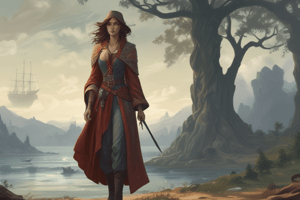Podcast
Questions and Answers
Match the character type with its description:
Match the character type with its description:
Protagonist = The central figure of the plot Antagonist = The character who opposes the protagonist Sidekick = Supports the protagonist and provides comic relief Foil = Character who contrasts with the protagonist to highlight their traits
Match the character role with its importance in storytelling:
Match the character role with its importance in storytelling:
Protagonist = Main character that drives the plot forward Antagonist = Creates conflict and obstacles for the protagonist Round Character = Complex with depth and emotions Flat Character = Serves a specific role without much development
Match the character type with an example:
Match the character type with an example:
Protagonist = James Bond Anti-Hero = Walter White from Breaking Bad Dynamic Character = Ebenezer Scrooge from A Christmas Carol Stock Character = The Wise Old Mentor
Match the character type with its role in the story:
Match the character type with its role in the story:
Match the following character types with their descriptions:
Match the following character types with their descriptions:
Match the following examples with their corresponding character type:
Match the following examples with their corresponding character type:
Match the following statements with the correct character type:
Match the following statements with the correct character type:
Match the following characteristics with the appropriate character type:
Match the following characteristics with the appropriate character type:
Match the following stories with their character perspective:
Match the following stories with their character perspective:
Match the following terms with their definitions:
Match the following terms with their definitions:




